Just before the new European Parliament starts work, it’s a good time to look at the successful challenges to secondary legislation dealing with chemicals by the European Parliament.
I have looked at five successful challenges in the last Parliament: four REACH Authorisations and one RoHS exemption.
The Council did not raise any objections on secondary legislation about chemical substances.
Some General Observations
Reading the objections they focus on:
- A substantive error of law
- Procedural errors
- Ignored something obvious that should have been taken into account
Most of the successful challenges, in general, are around public health issues.
In the main, they mirror the three grounds to challenge a RPS draft: 1. excess of implementing powers, 2. Violation of the aim or content of the legislation, and 3. violation of subsidiarity or proportionality.
It is not easy to mount a successful challenge. The challenge has to be launched quickly after the Commission transfers the text to the European Parliament. It is clear that challenges are not launched on a whim. They are not vexatious.
The challenges secure cross Party support, although the challenges are launched by the Greens and S&D. The size of support in the environment committee and in the full Parliament is often considerable.
If you want to challenge a measure, you are going to have to jump over some very high procedural hurdles.
In the European Parliament, you are going to have to:
- Find someone to support you
- Get it past the lead Committee (environment for chemicals), and if passed
- Get 376 votes for RPS and Delegated acts or majority for implementing acts. To see how hard this threshold see this piece on Canadian Oil Sands challenge
Specific Observations
First, the challenges are specific, well reasoned and detailed.
Second, they often highlight the availability of substitutes.
Third, they ask for a more narrow authorisation rather than a simply scrapping it. Indeed, in some, they acknowledge that need for some uses but draw a line about broad or generic derogations.
Finally, one person is behind every successful challenge.
Case Studies
- 27 March 2019: Objection pursuant to Rule 106: Certain uses of bis(2-ethylhexyl) phthalate (DEHP) (DEZA a.s.)
Measure: Implementing act
Objection by: Poc (S&D), Konečná (GUE), Eickhout (Greens/EFA)
Committee vote: 14 March 2019
Adopted: 39 in favour, 2 against and 1 abstention
Plenary Vote: 27 March 2019
Adopted: For: 545, Against: 50, Abstentions: 24
Vote Watch Link
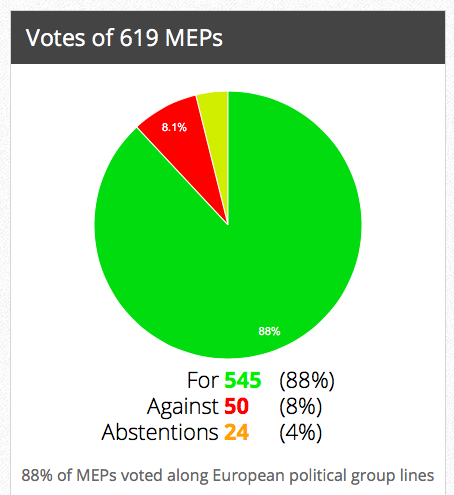
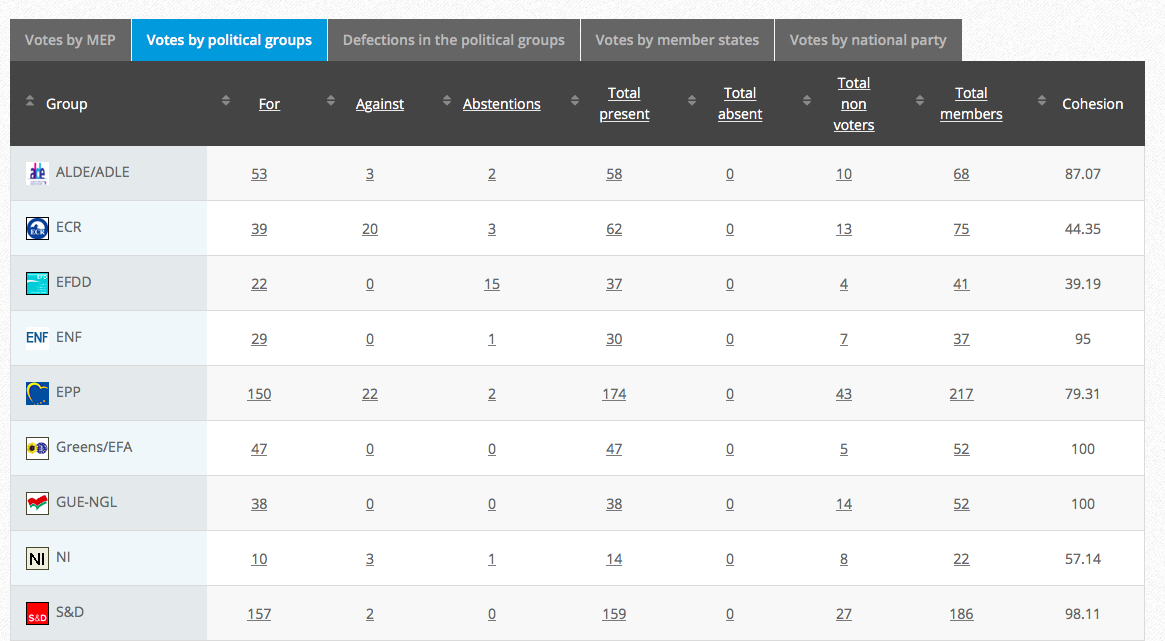
EP objection authorisation DEHP DEZA 27 March 2019
2. 27 March 2019: Objection pursuant to Rule 106: Certain uses of bis(2-ethylhexyl) phthalate (DEHP) (Grupa Azoty)
Measure: Implementing act
Objection by: Poc (S&D), Konečná (GUE), Eickhout (Greens/EFA)
Committee vote: 14 March 2019
Adopted: 42 in favour, 0 against and 1 abstention
Plenary Vote: 27 March 2019
Adopted: Carried by a show of hands
EP objection authorisation DEHP Grupa 27 March 2019
3. 27 March 2019: Objection pursuant to Rule 106: Certain uses of chromium trioxide
Measure: Implementing act
Objection by: Eickhout (Greens/EFA)
Committee vote: 21 March 2019
Adopted: for: 20, against 16, abstentions 3
Plenary Vote: 27 March 2019
Adopted: For: 309, Against: 286, Abstentions: 24
Vote Watch Link
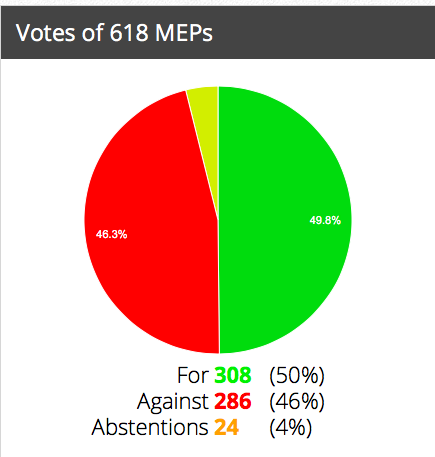
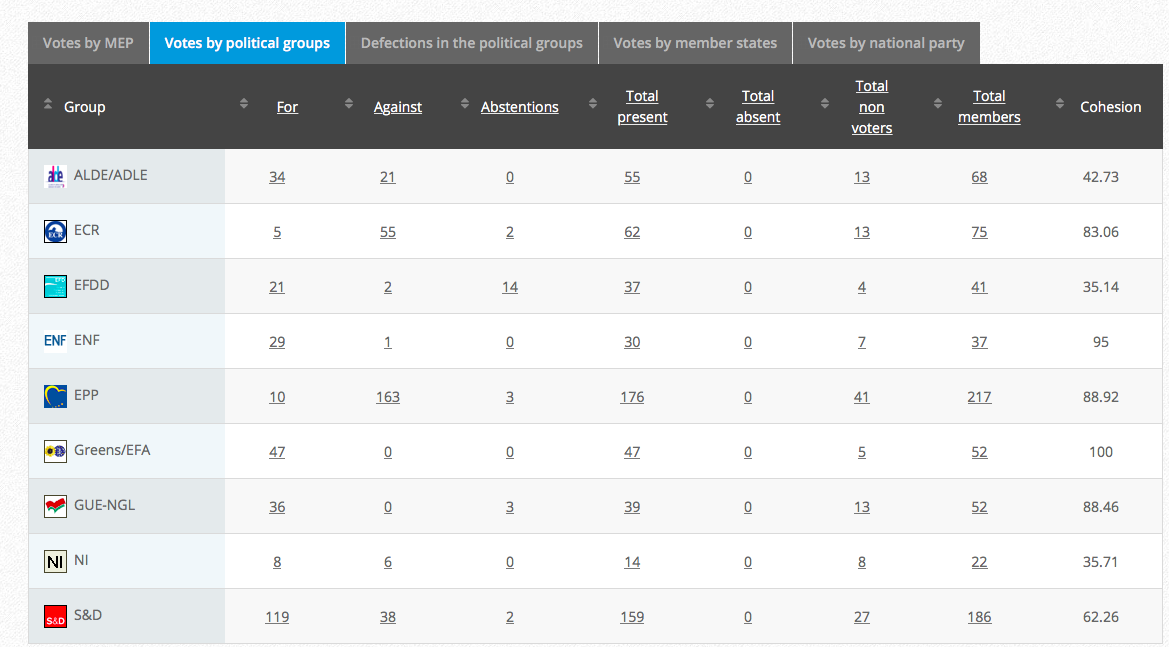
EP objection Lanxess chromium trioxide 27 March 2019
5. 25 November 2015: Authorisation for uses of bis(2-ethylhexhyl) phthalate (DEHP)
Measure: Implementing act
Objection by: Poc (S&D)
Committee vote: 10 November 2015
Adopted by: 58 for, 5 against, 0 abstention
Plenary Vote: 25 November 2015
Adopted: For 603 for, against 86, abstentions 5
Majority needed: simple majority 345
EU Vote Watch link
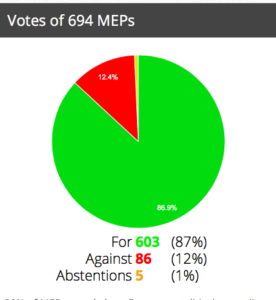
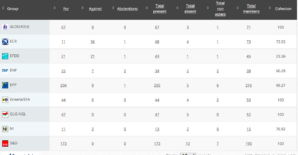
EP objection authorisation DEHP 25 Nov 2015
20 May 2015: Exemption for cadmium in illumination and display lighting applications
Measure: Delegated act
Objectors: Eickhout, Taylor (Greens/ALE), Groote, Sârbu, Poc, Dance, Melior, Guteland (S&D Group), Konečná (GUE)
Committee Vote: 13 May 2015
Adopted: unclear
Plenary Committee Vote: 20 May 2015
Adopted by 618 for, 33 against, 28 abstentions
Majority needed: 376
EU Vote Watch link

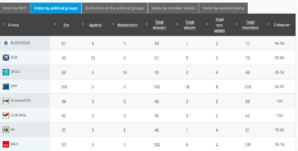
exemption for cadmium in illumination and display lighting applications 20 May 2015